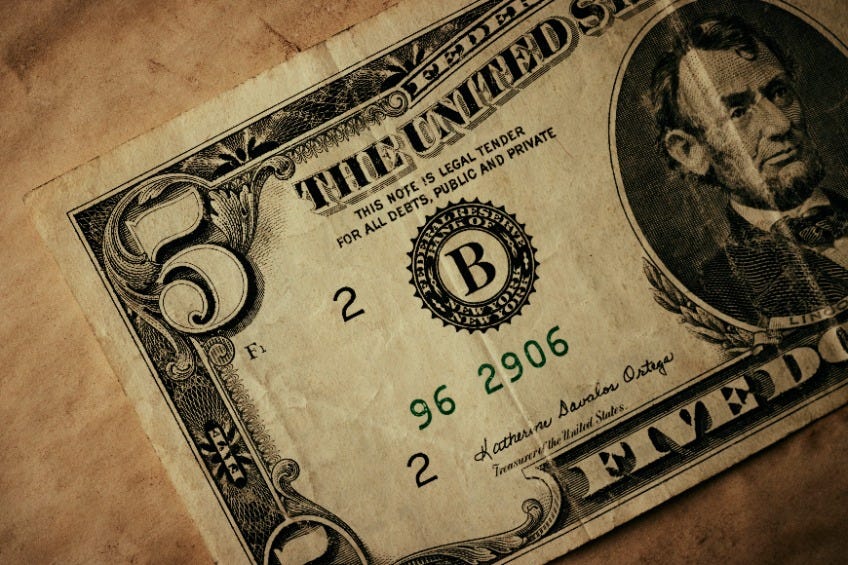Issue #444 Black History Tuesday, January 2, 2024
Welcome to this Today in Black History post. Black History IS American History, no matter how hard some people try to erase our history and contributions.
A lot of this information is available at yenoba.com, blackfacts.com, and onthisday.com.
This post is free to read/listen to for two days. To have 365 24/7 access to all our posts and podcast episodes and financially support “We Are Speaking” for no more than $5 per month, please subscribe at the paid level.
Are you an independent author or creative professional looking for a place where you can tackle those branding and marketing challenges and learn with me through valuable books and online courses? The Global Creative Community Branding and Marketing Academy (GCC BMA) is for you!
Today’s Black WOW!
Ambassador Nikki Haley, the cause of the Civil War was slavery. Period.
After his election in 1860, and before his inauguration in March 1861, Abraham Lincoln pleaded with the Southern states not to secede. However, South Carolina became the first state to secede in December 1860, with several other states soon following, specifically to preserve slavery.
President Lincoln’s first objective was to preserve the Union and to keep slavery from expanding to the western states and territories after the 1857 Dred Scott v Sanford decision that upheld slavery in the new territories and denied the benefits of American citizenship to Black people. Initially, Lincoln pledged not to eliminate slavery where it was already established.
During the early years of the Civil War, the Confederacy was winning more battles than the Union, and the slaves in the South were often required to fight against the North. The Northern States had industrial growth and technology while the Southern States still relied heavily on agriculture and slavery. Many of the foreign countries were against slavery and sided with the Union.
The primary objective behind Lincoln's decision to write the Emancipation Proclamation was to weaken the Confederacy by depriving them of their labor force. By declaring all slaves in Confederate-held territory to be "forever free," Lincoln aimed to undermine the economic and human resources that supported the Confederacy's war effort.
The Emancipation Proclamation, an executive order officially named (Presidential) Proclamation 95, was signed by President Abraham Lincoln on September 22, 1862, and took effect on January 1, 1863. The Emancipation Proclamation marked a significant turning point in the fight against slavery, as it shifted the Union's war objectives to include the goal of ending slavery altogether in the entire United States.
However, it is important to note that the Emancipation Proclamation did not actually free all slaves. It only applied to those held in territories under Confederate control. Slavery remained legal in the border states that had not seceded from the Union, as well as in areas already under Union control. It wasn’t until June 19, 1865, after the official end of the Civil War, that Union troops arrived in Galveston, Texas to officially free the slaves in the 28th state.
The Emancipation Proclamation contributed to the eventual passage of the Thirteenth Amendment to the United States Constitution, formally abolishing slavery throughout the nation. The proclamation helped build momentum and public support for this crucial legislation, enacted in 1865 after the Civil War ended.
While the Emancipation Proclamation did not immediately free all slaves, its issuance forever altered the course of American history by positioning the abolition of slavery as a central objective of the Union during the Civil War and paving the way for its eventual abolition throughout the nation.
Today In Black History
- In 1800, free Blacks in Philadelphia petitioned the US Congress to abolish the slave trade. The petition was rejected.
- In 1872, 24-year-old John Roy Lynch was elected Speaker of the Mississippi House.
- In 1903, President Theodore Roosevelt shut down the post office in Indianola, Mississippi, for refusing to accept its appointed Black postmistress.
- In 1927, Dr. Sadie T.M. Alexander became the first Black woman to gain admission to the Pennsylvania Bar, although she was denied admission to Phi Beta Kappa while a student at the University of Pennsylvania when she graduated with honors in 1918.
- In 1969, at age 75, Dr. Benjamin Mays was elected president of the Atlanta Public Schools Board of Education where he supervised the peaceful desegregation of Atlanta’s public schools.
- In 1970, Dr. Clifton Wharton became the first Black president of Michigan State University.
- In 1990, David Dinkins was inaugurated as the first Black mayor of New York City.
The “Comments” feature has been disabled. Instead, let’s discuss these facts in our community on Substack Notes. You can also read other Substack publications without subscribing to them when you join Notes.







